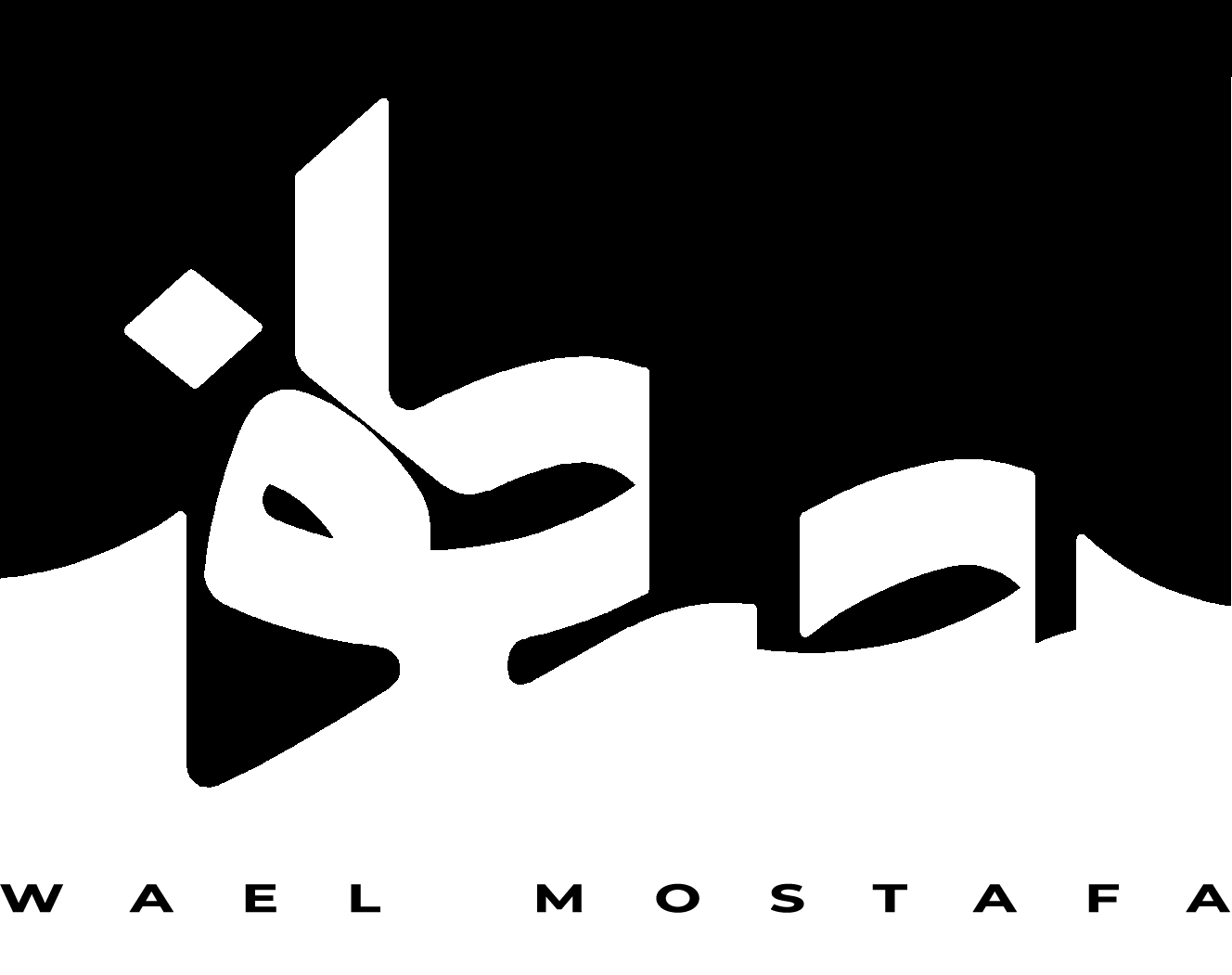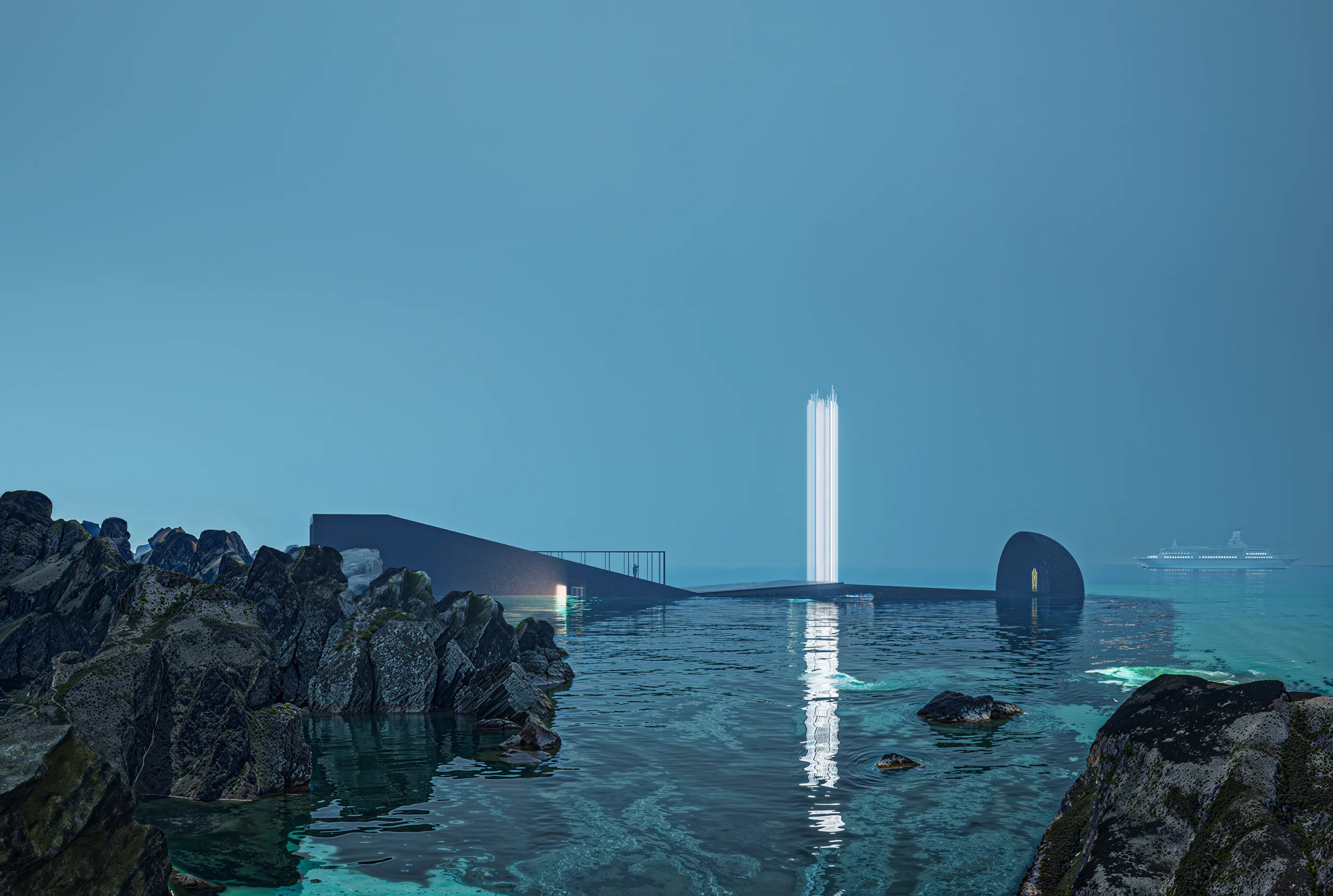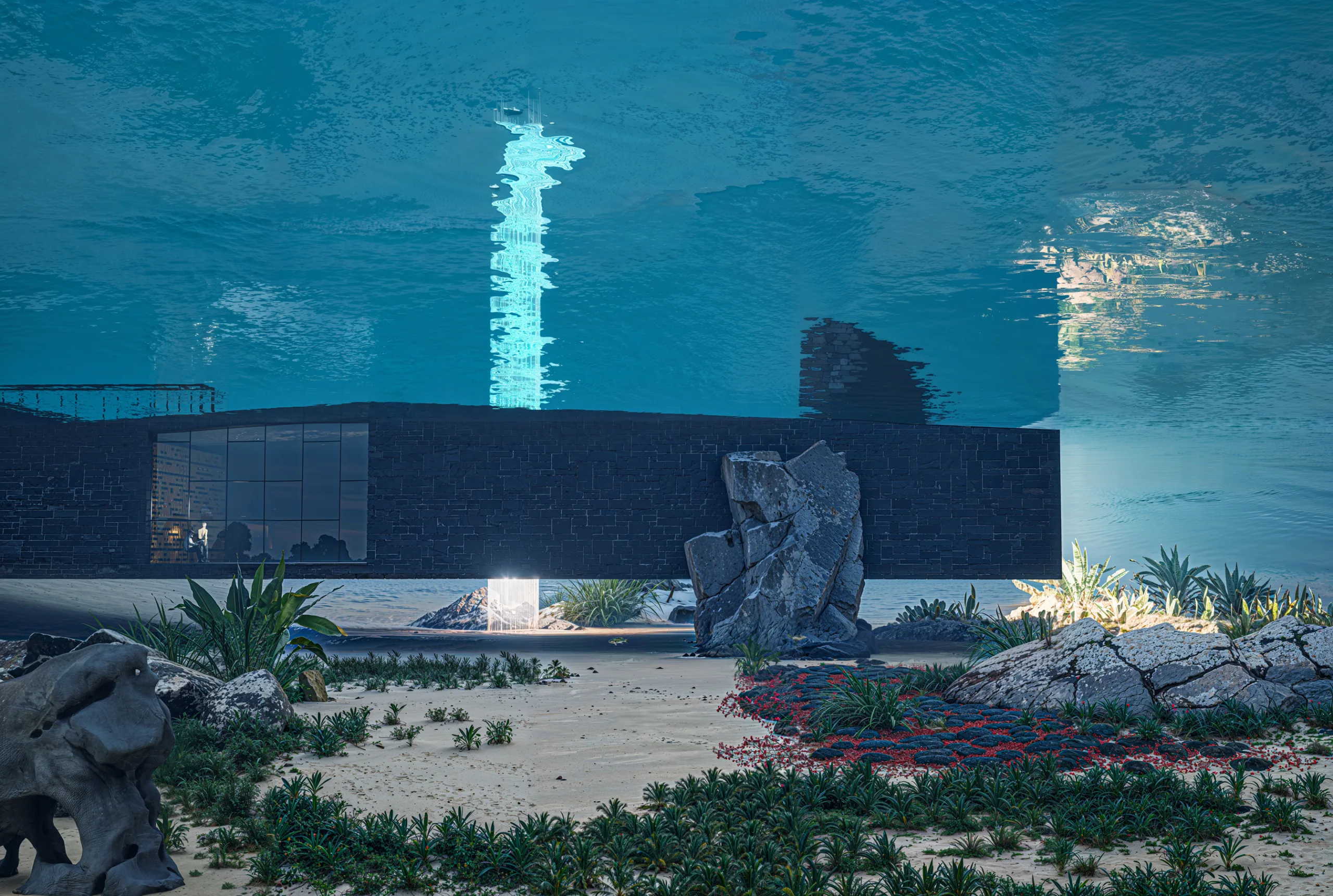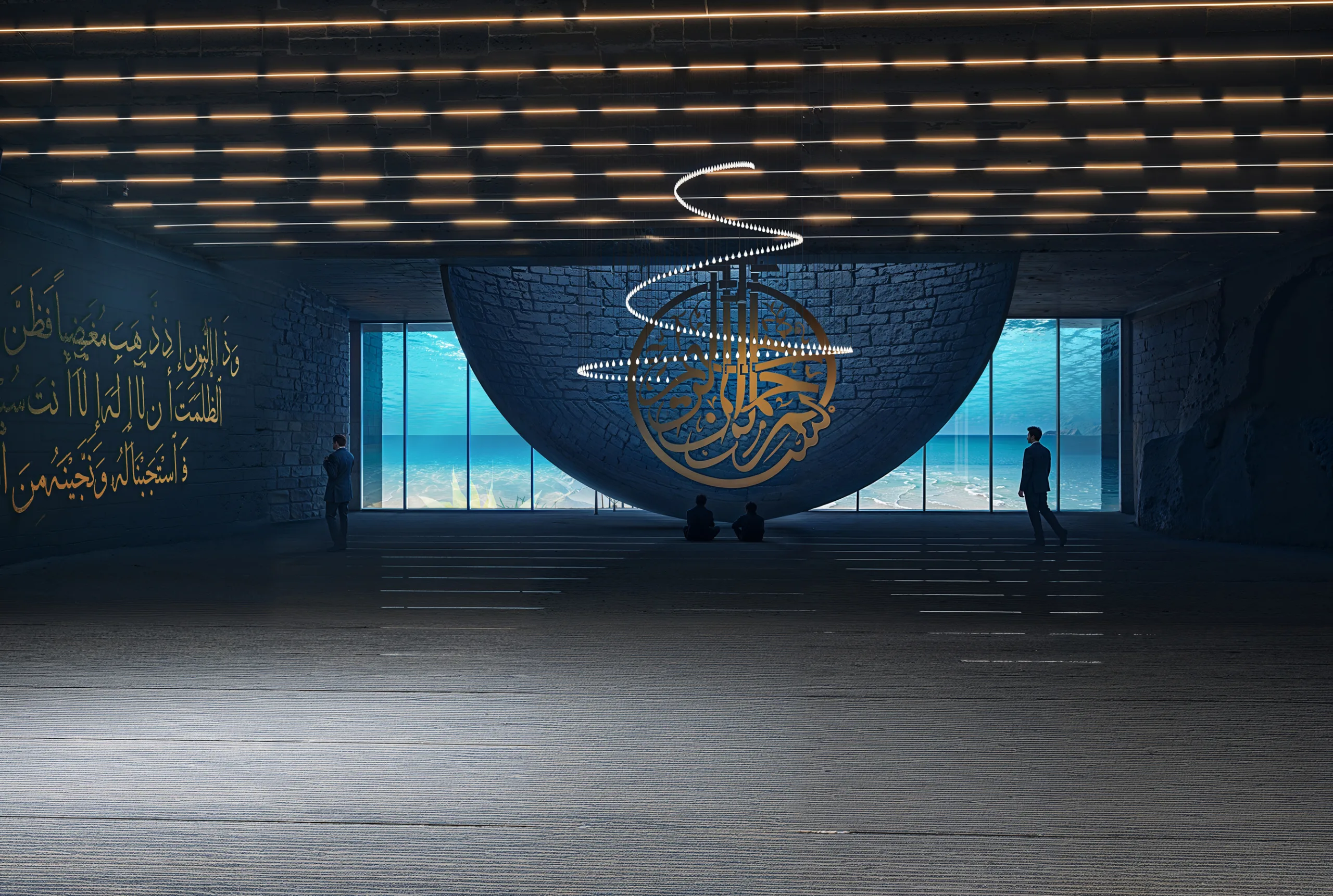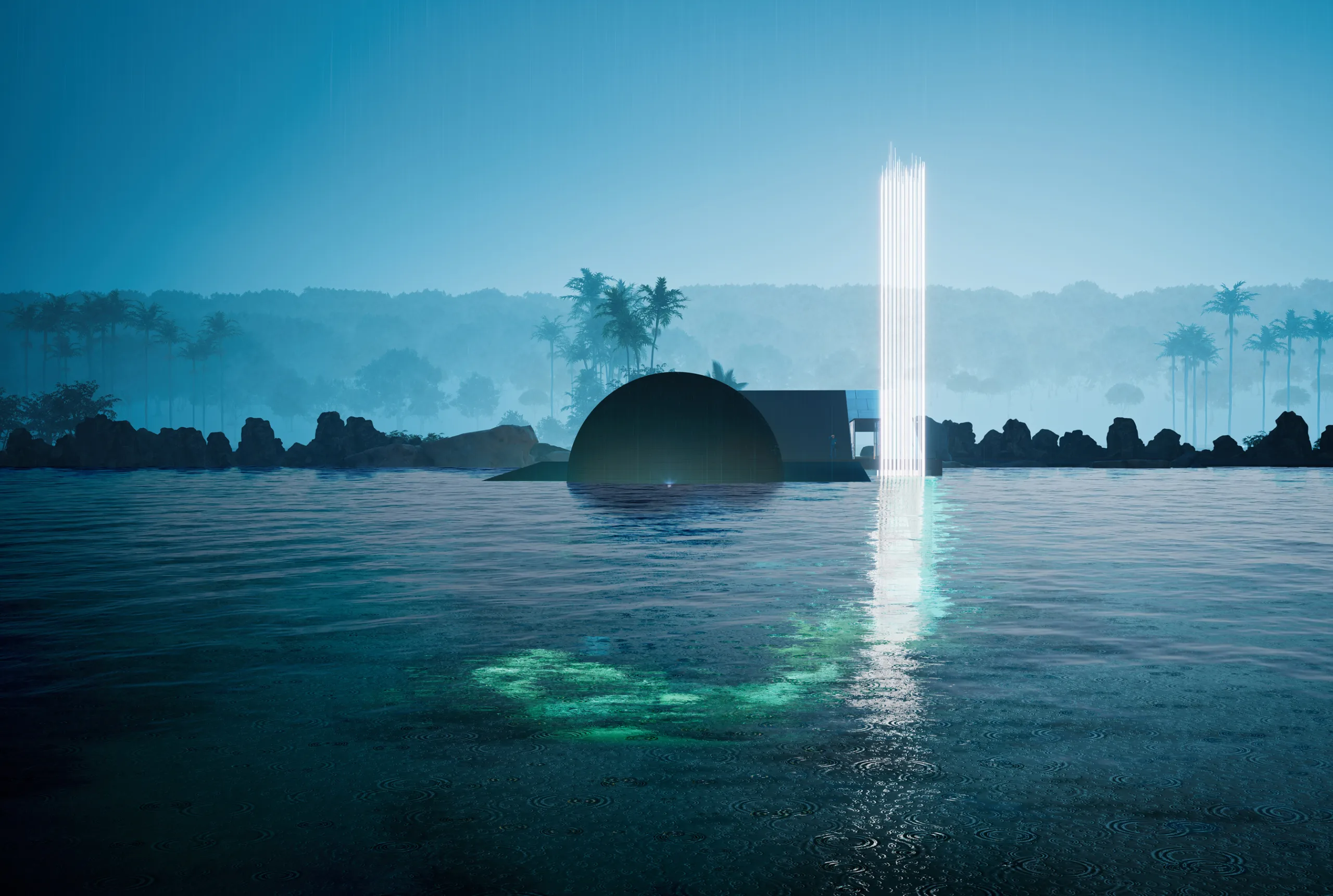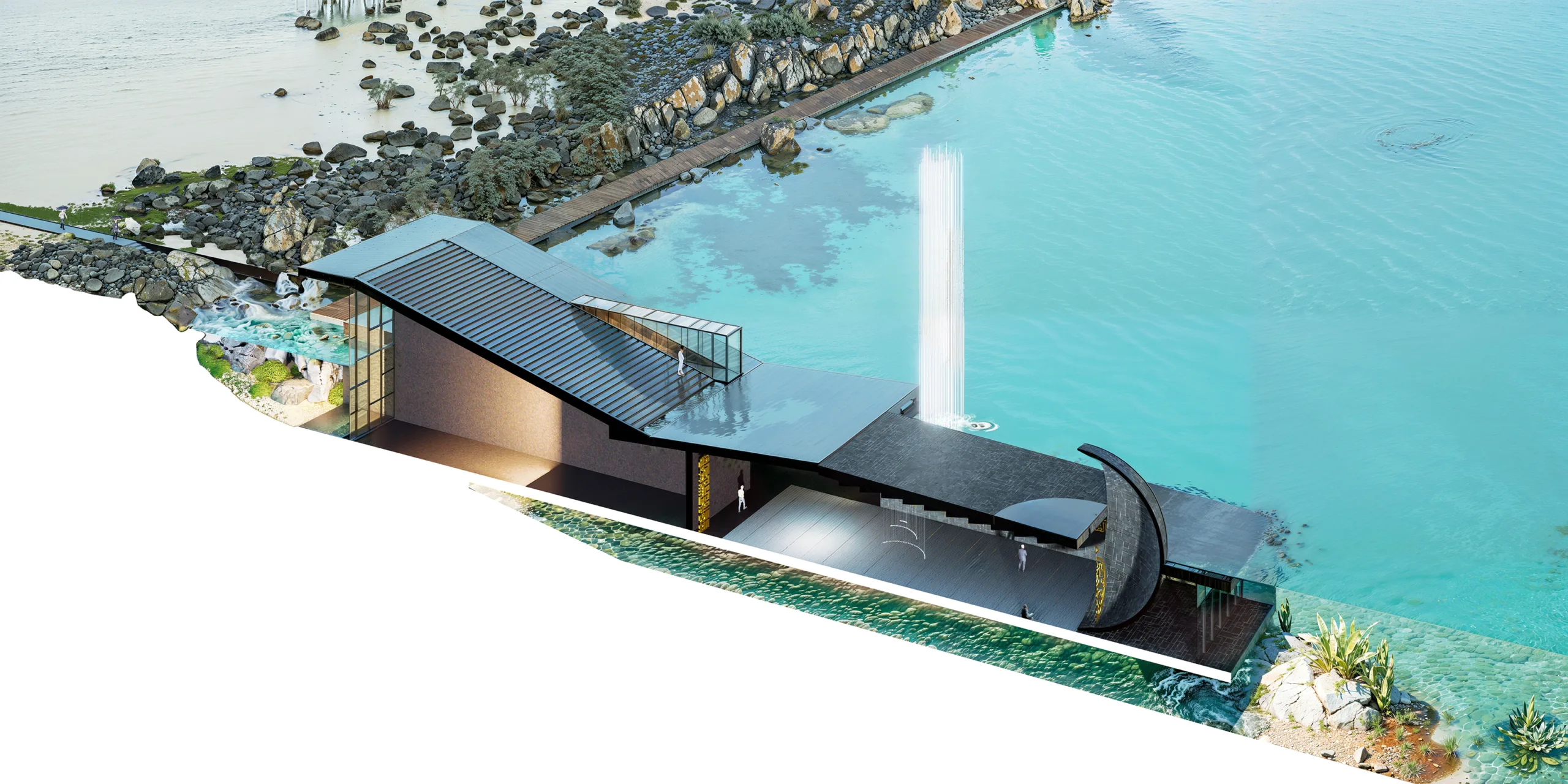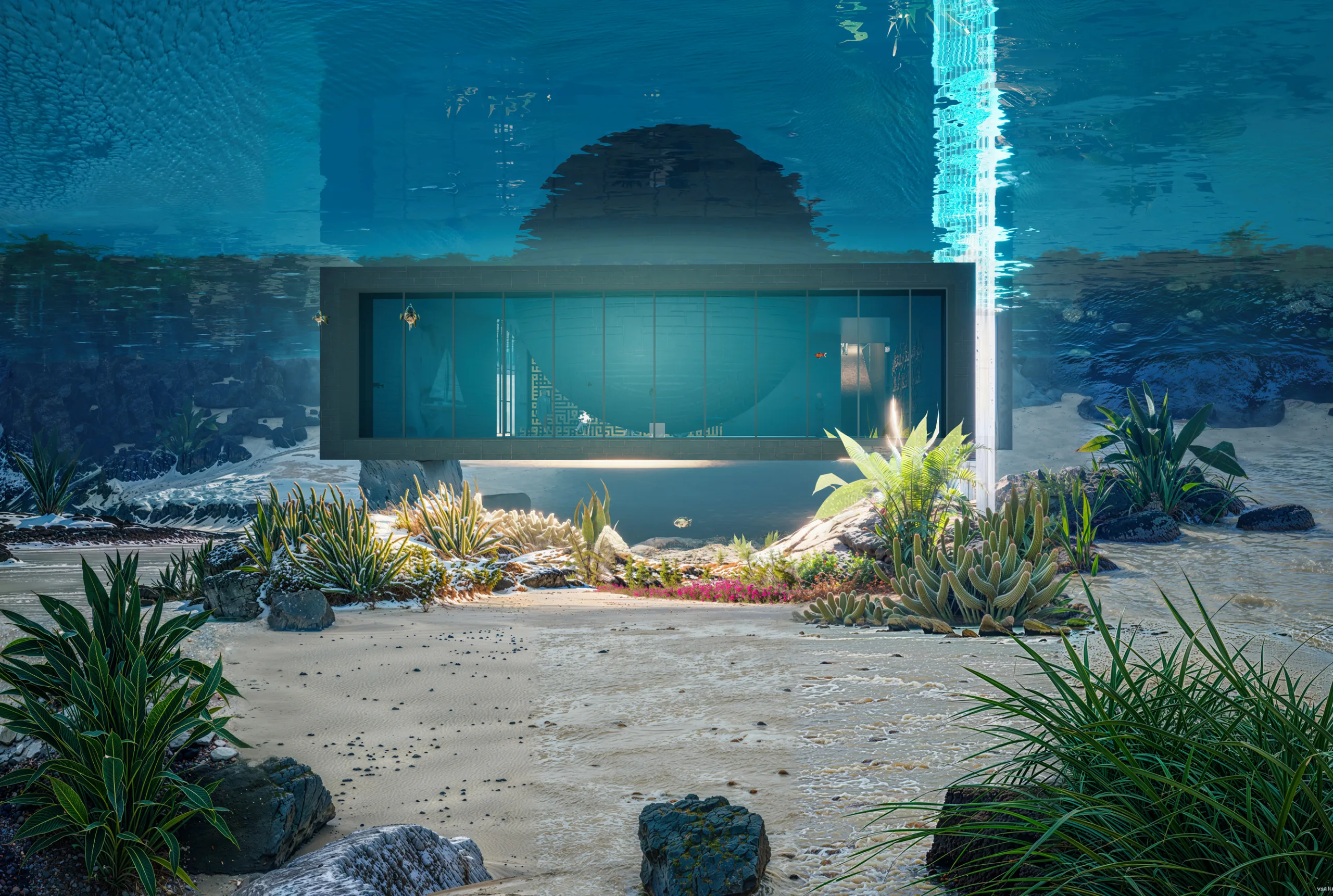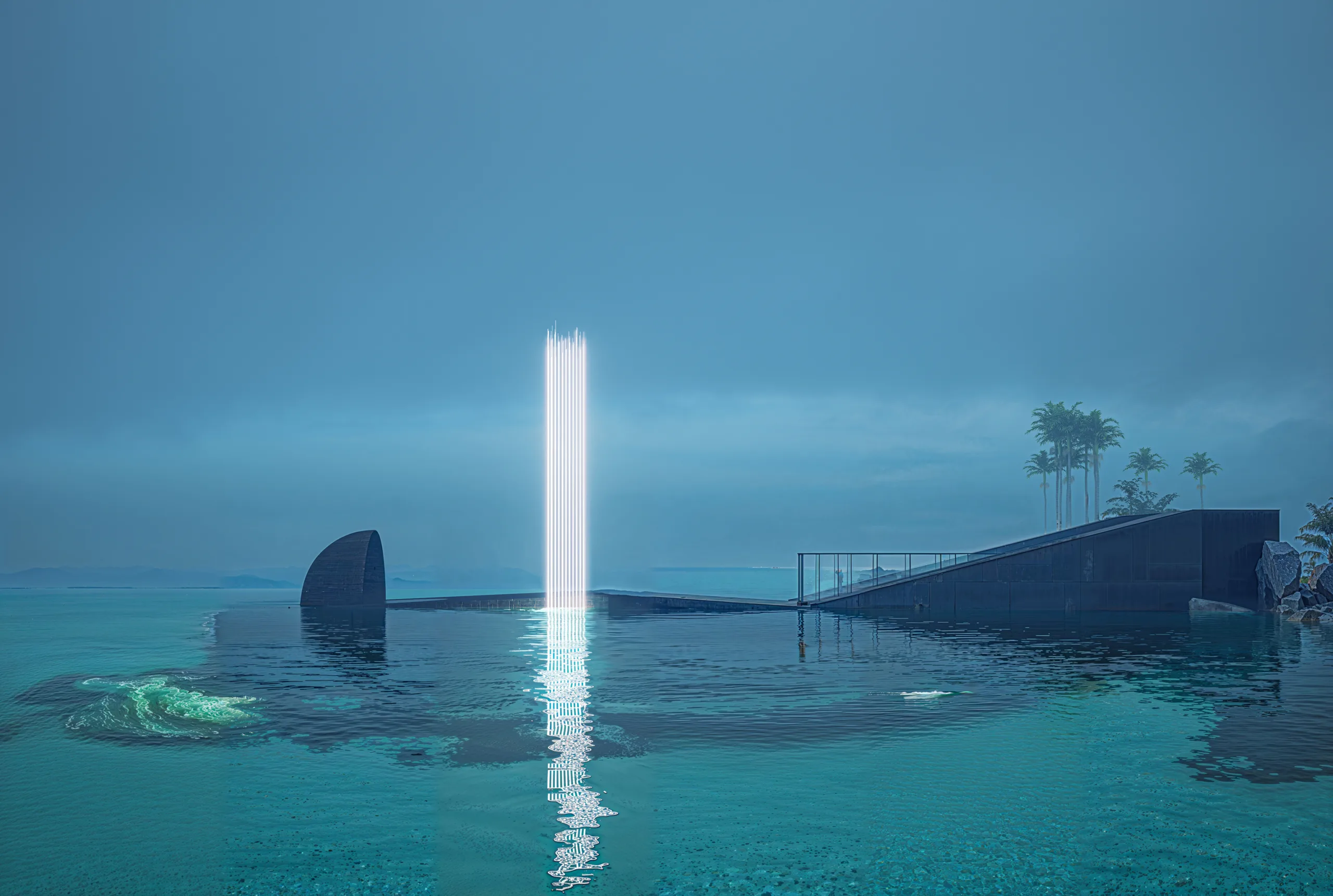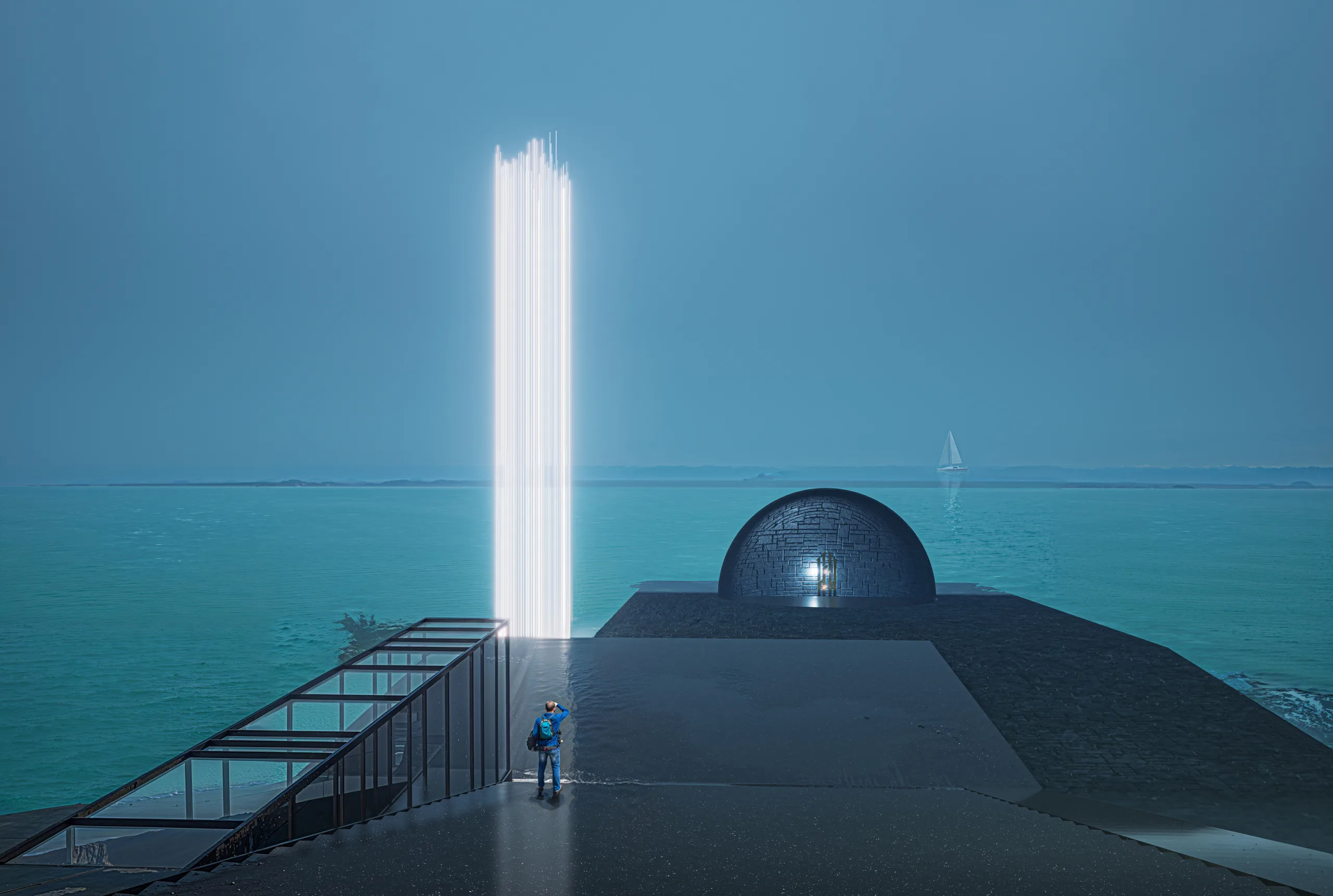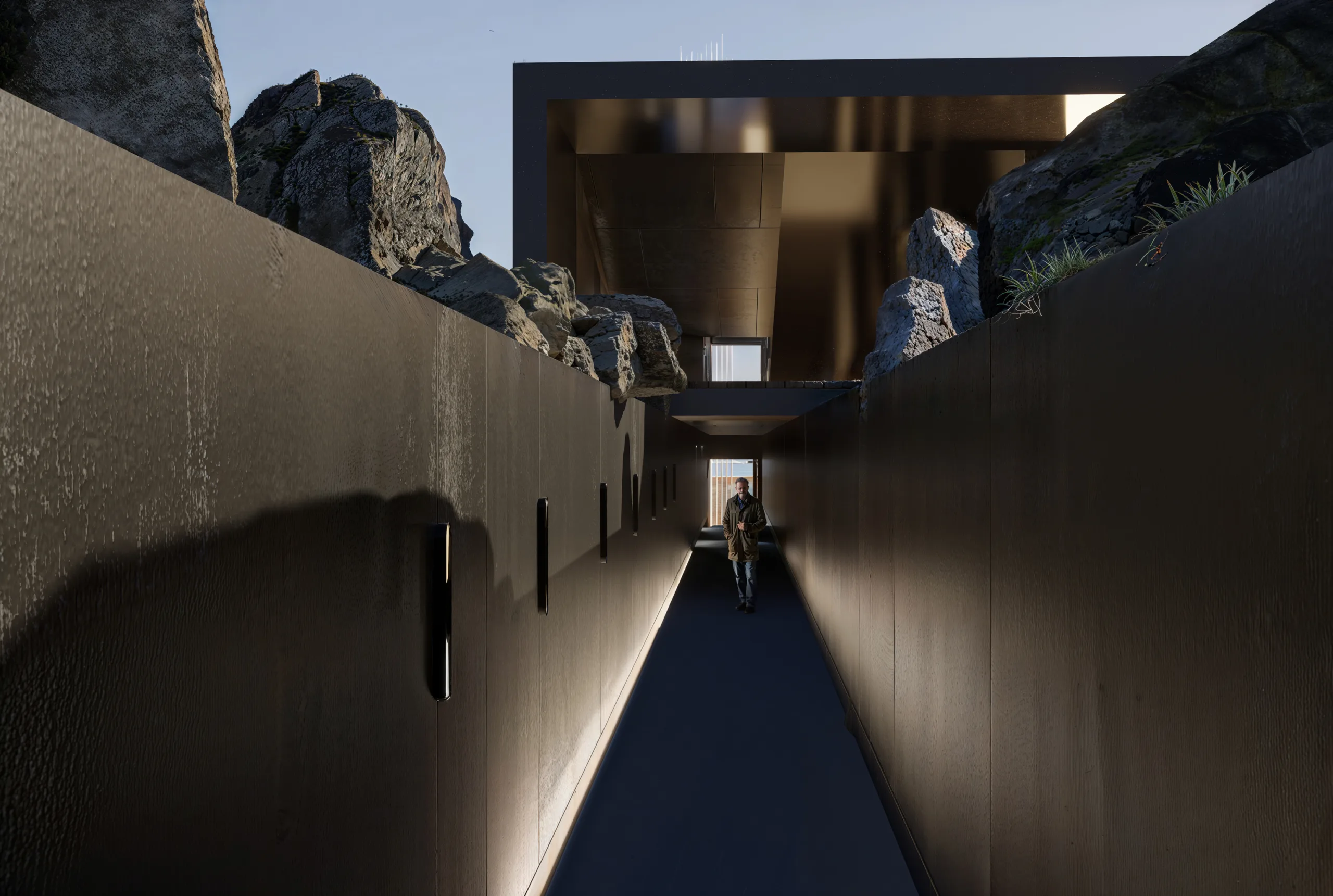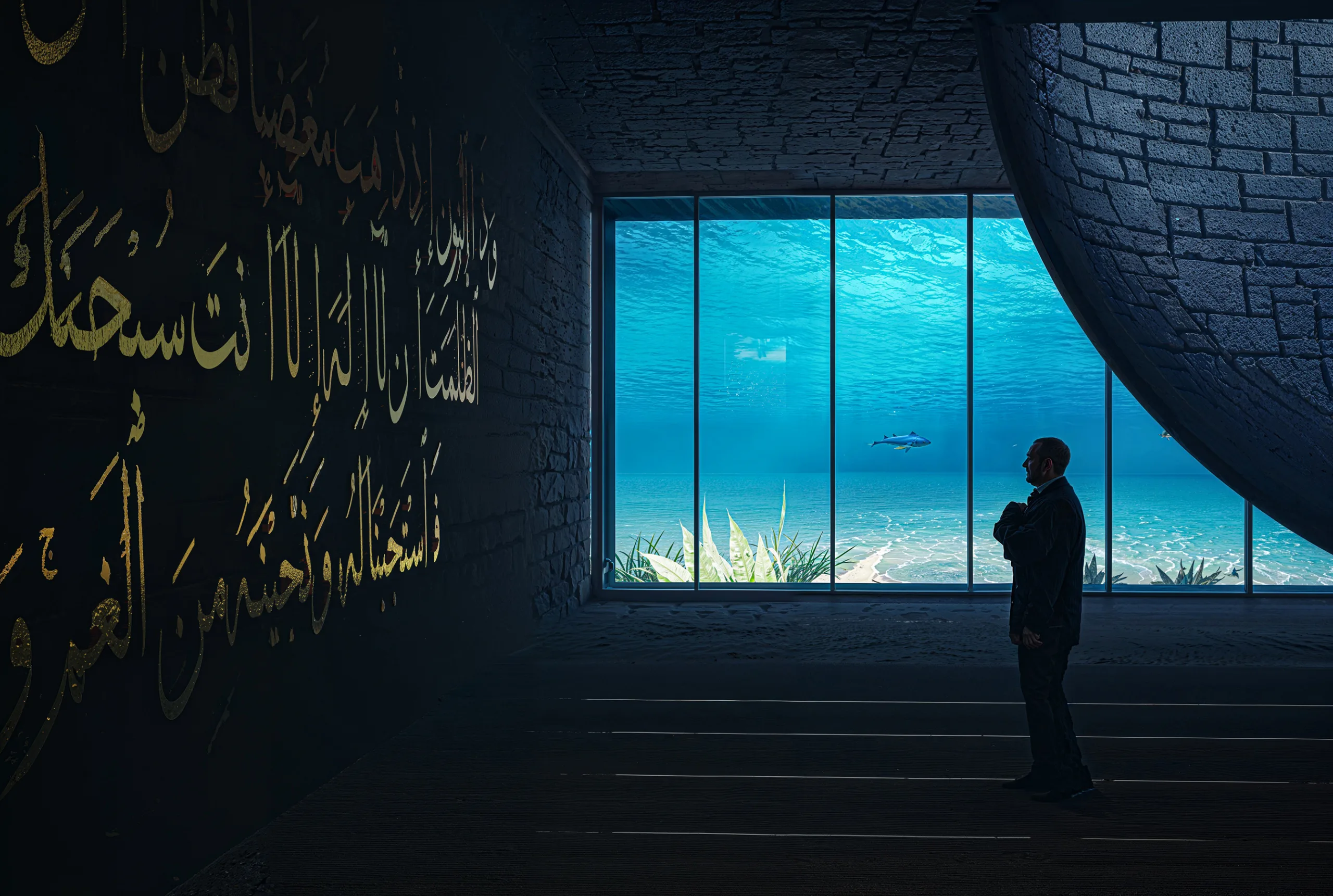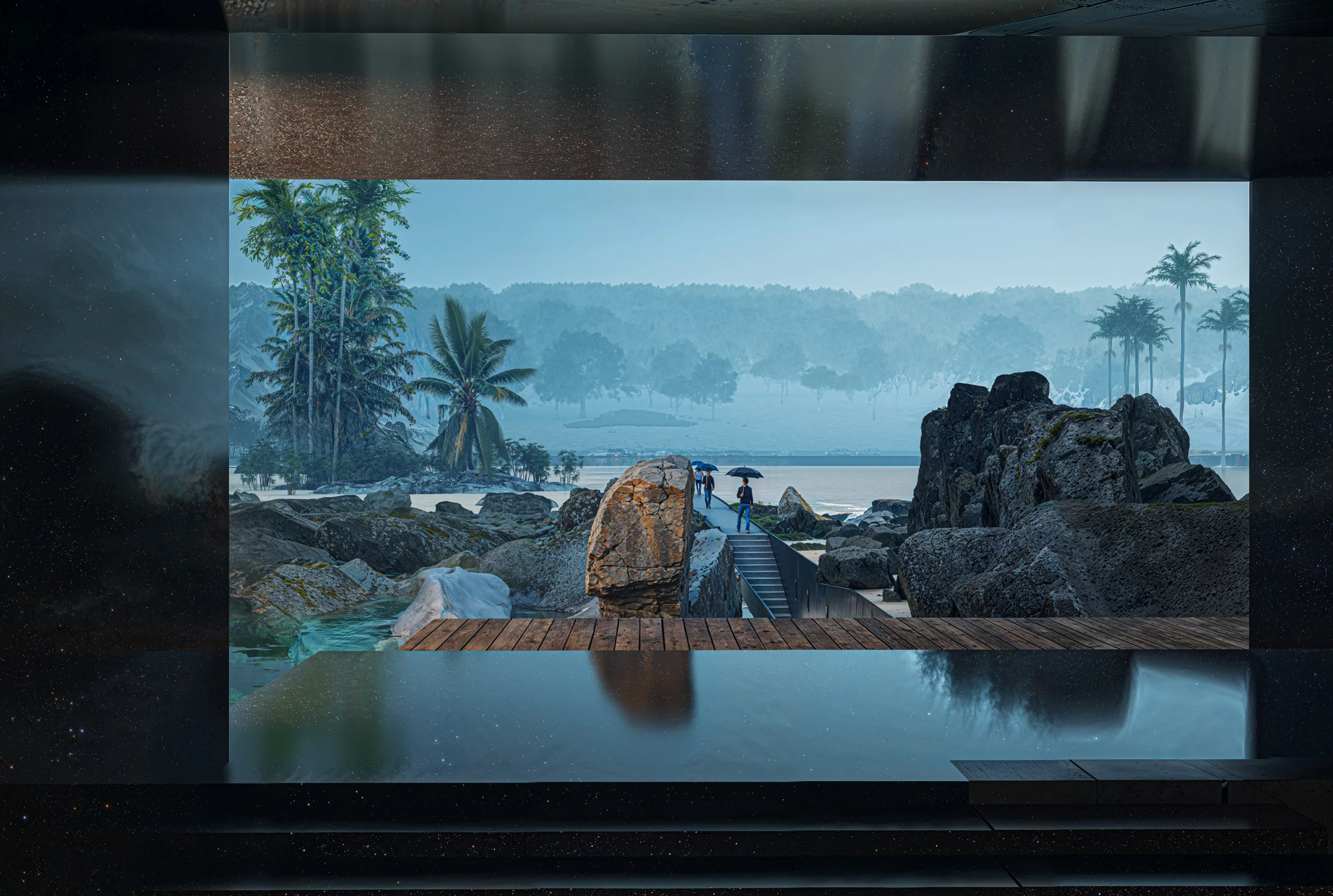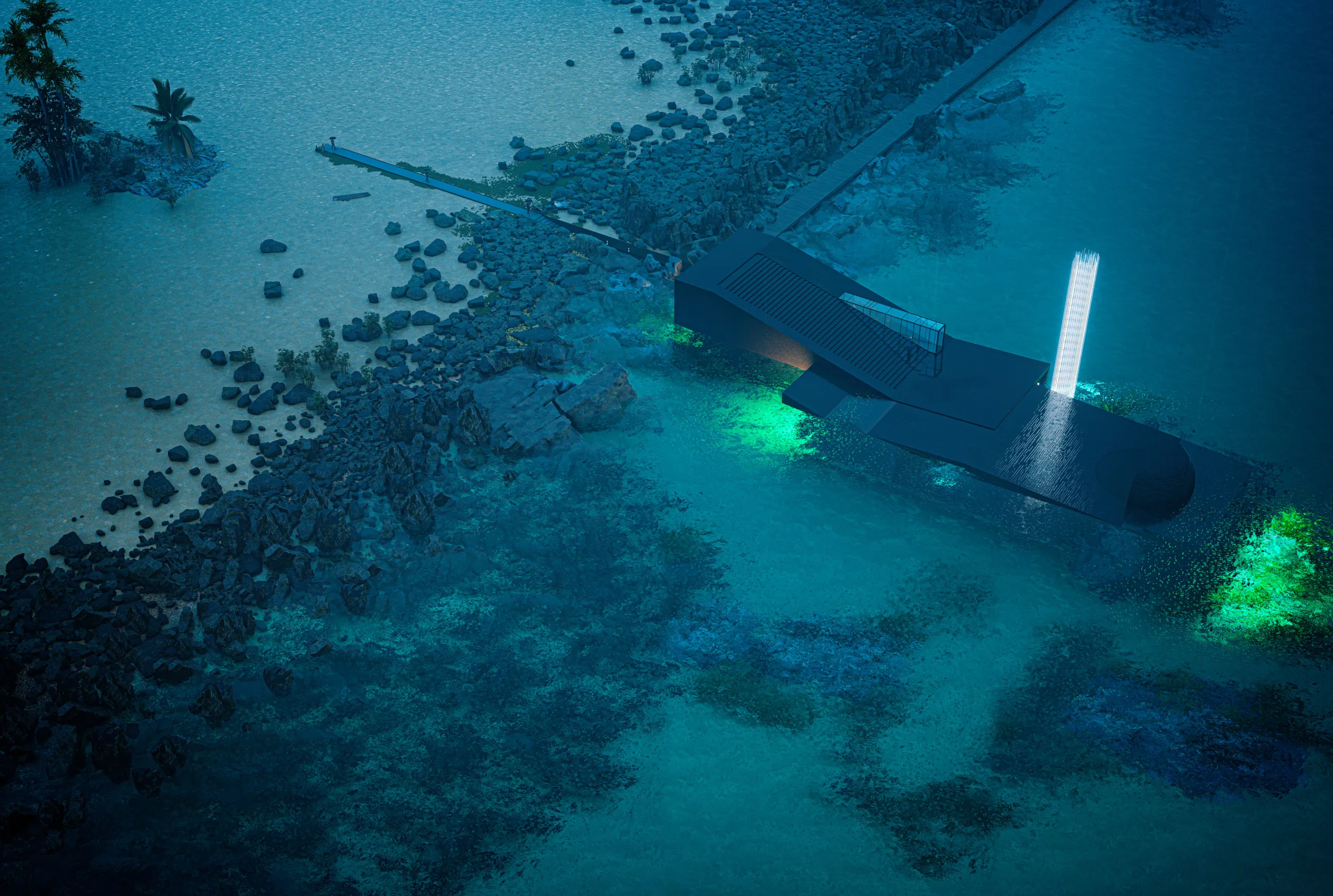
Noon Mosque is a contemporary architectural interpretation of the Qur’anic story of Prophet Yunus (Jonah), who found light through darkness in the belly of the whale. Half submerged in water, the mosque invites spiritual reflection through its symbolic descent, dual entrances, and minimalist use of natural black stone. A hemispherical dome filters light into the interior, while a luminous minaret rises silently from the sea. Qur’anic verses from Al-Anbiya and Al-Saffat are inscribed as spatial narratives. The project transforms emotional and spiritual themes into built form, creating an immersive experience of repentance, humility, and divine connection.
Noon Mosque: Architecture of Descent and Divine Mercy
Yunus (Jonah), the son of Mattā, is a prophet mentioned in the Qur’an, sent by God to the people of Nineveh to call them to monotheism. When he left his people in anger without divine permission, he was swallowed by a great fish in the depths of the sea. His salvation came through his heartfelt supplication:
“There is no deity except You; exalted are You. Indeed, I have been of the wrongdoers.”
[Surat Al-Anbiya: 87]
In Islamic tradition, the story of Yunus symbolizes repentance, surrender, and divine mercy. It reflects the internal human struggle and the journey toward divine light through the darkness of ego, disorientation, and forgetfulness.
Architectural Concept – From Darkness to Light
“Noon Mosque” is part of an ongoing design research series that seeks to translate spiritual and emotional Islamic concepts into contemporary architectural language. The goal is not to replicate religious symbols literally, but to reimagine them spatially and philosophically.
At the core of the project lies the story of Prophet Yunus, not merely as narrative, but as an existential allegory of rupture and revelation, of concealment and emergence. The mosque becomes an experiential space where architecture reenacts the journey of the soul.
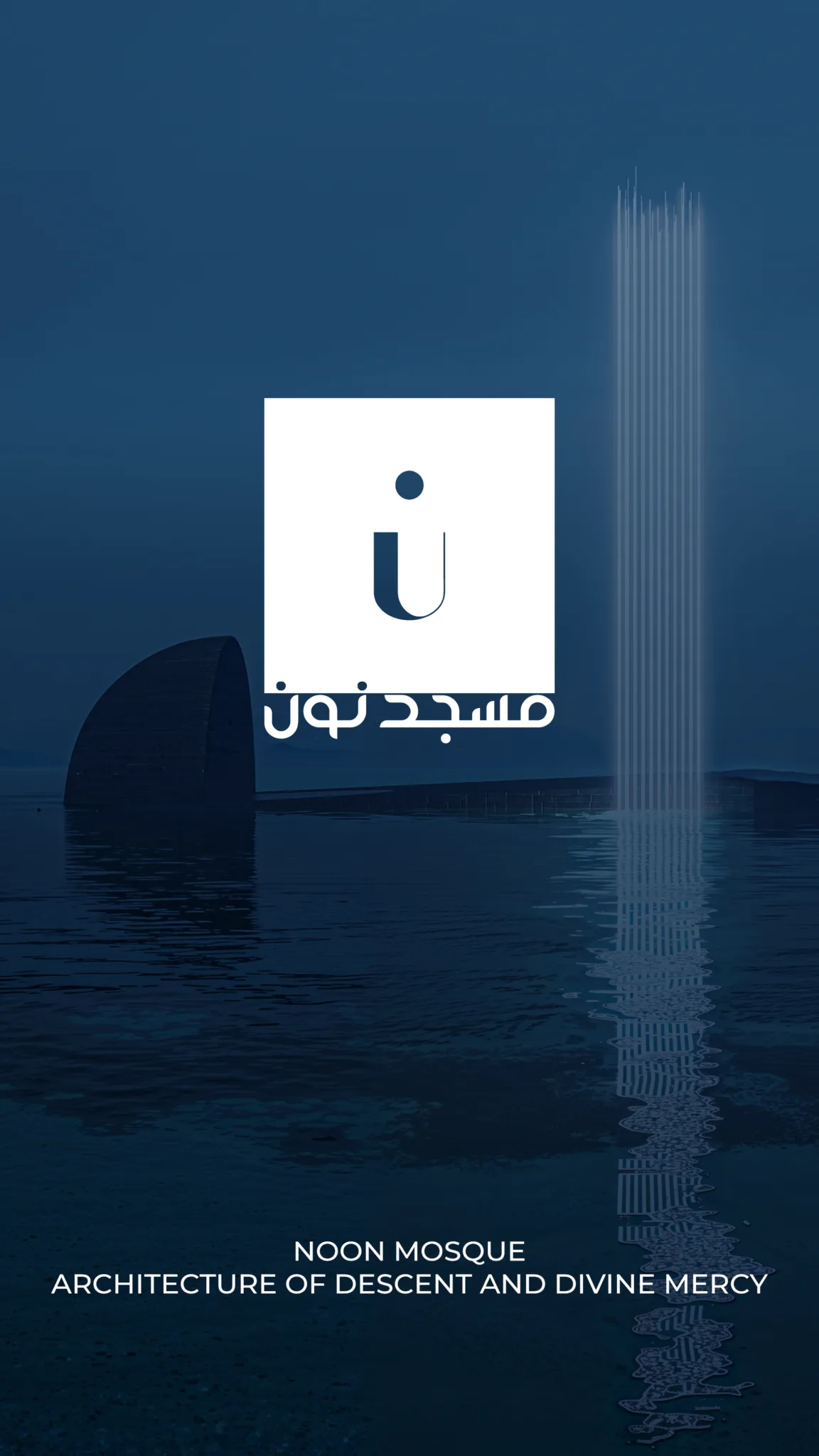
Form and Symbolism
Water as Spiritual Medium: Half of the mosque lies submerged, invoking the idea of inward descent. Water represents not just nature but a medium of purification and transformation, echoing the womb-like darkness of the whale that cradled the prophet in solitude and reflection.
Two Entrances:
One at shoreline level: an easeful, horizontal entry symbolizing gentle spiritual initiation.
One via a sloped descent: a vertical plunge into depth, evoking introspection, humility, and the act of repentance.
The Dome and Light: A minimal black stone hemisphere serves as a symbolic dome. It allows a narrow beam of light to pierce the interior – a metaphor for divine guidance breaking into darkness. The dome suggests at once the grave and the womb, darkness and potential.
The Minaret: Reimagined as columns of pure light emerging from the water surface and reaching skyward. It does not project sound but rather illumination, acting as a silent beacon for wandering hearts.
Qur’anic Inscriptions: Select verses from Surat Al-Anbiya and Al-Saffat are inscribed within, not as decorative texts but as experiential narratives, inviting the visitor to read them as they read themselves.
Materiality: The primary building material is natural black stone, conveying weight, permanence, and connection to earth and memory.
Interior Lighting: Dispersed ceiling lights appear like scattered stars in the night sky – faint signs of hope within the deep.
From Symbol to Experience
“Noon Mosque” is not merely a place for prayer. It is designed as a spatial journey that reactivates deep Qur’anic themes: guilt, forgiveness, isolation, and light. It becomes an architecture of questioning rather than answering, a vessel for the wisdom of Yunus – that light is found only by entering the dark.
